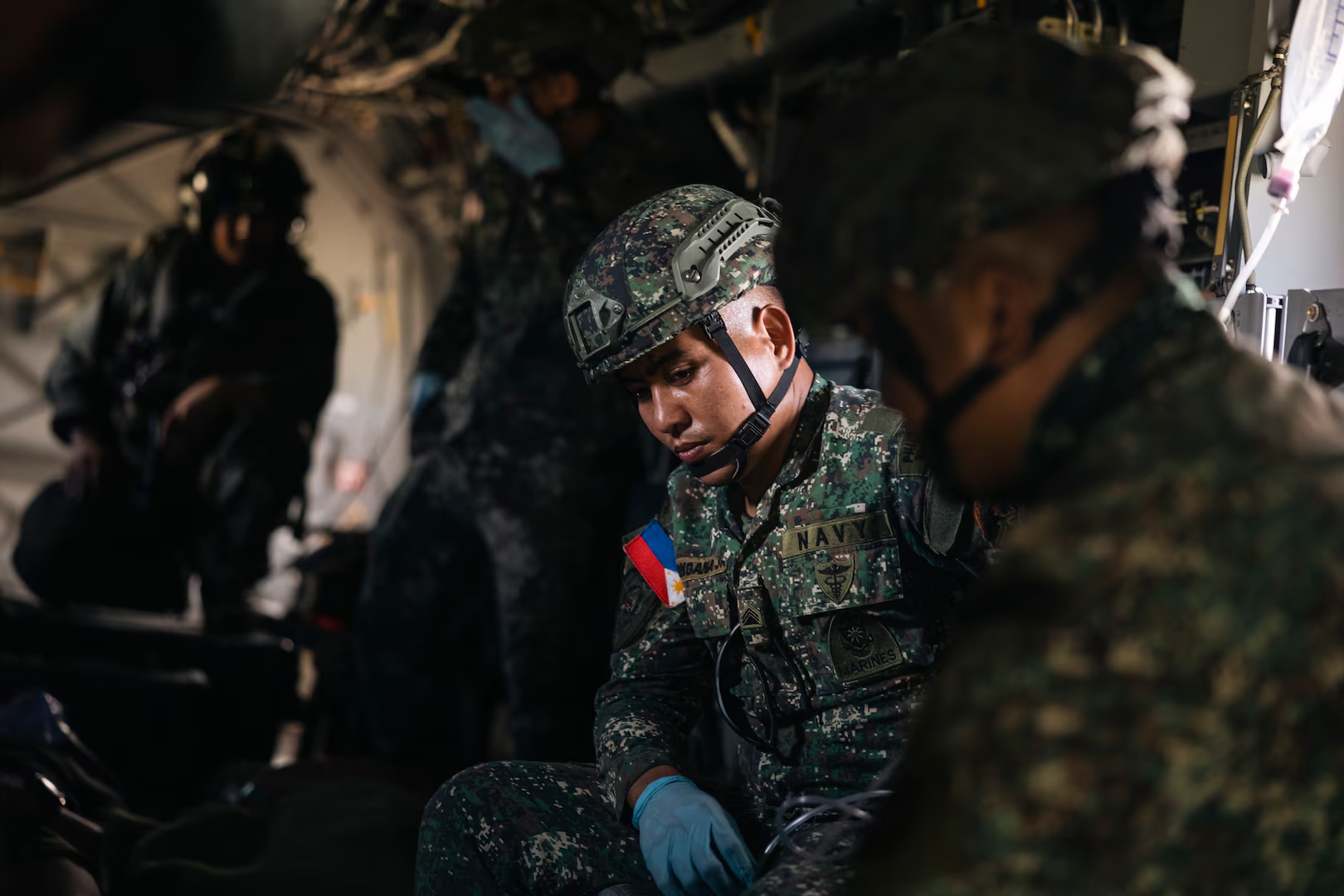In a historic first, six nations converged on Filipino soil in the wake of a super typhoon to train, learn, and strengthen their partnership during KAMANDAG 8, reaffirming the exercise’s importance to regional peace and stability in the Indo-Pacific.
The two-week exercise, which concluded on Oct. 25, focused on enhancing defense and humanitarian capabilities through combined training events and expert exchanges. Participants engaged in a wide range of training activities, including chemical, biological, radiological, and nuclear response; humanitarian assistance and disaster relief; unmanned aerial systems use; small boat operations; logistics; civil-military operations; coastal defense; and command and control processes.
Among the participants in KD8 was a detachment of Marines and Sailors from Marine Rotational Force-Southeast Asia, a unit derived from elements of I Marine Expeditionary Force designed to provide a persistent presence in the region while conducting exercises and military expert exchanges with allies and partners. For instructors with MRF-SEA, the exchanges were invaluable to sustaining partnerships west of the International Date Line.
“The exchanges with not just our Philippine Marine Corps partners, but all partner nations, allow us to learn and grow as a fighting force,” said Gunnery Sgt. Ryan Berthiaume, CBRN chief with MRF-SEA. “Everyone has different ways of doing the same mission. These events are a great way to alter our way of thinking and apply new procedures to our own techniques, tactics, and procedures.”
Just days before KAMANDAG 8 kicked off, U.S. Marines, Philippine Marines and citizens concluded a real-world foreign disaster relief mission in support of Philippine citizens residing in typhoon-stricken Northern Luzon. Efforts to transport nearly 100,000 pounds of supplies and family food aid packs from Manila to Laoag International Airport and then onward to affected areas near Basco solidified a joint commitment of protecting the people of the Philippines from natural disasters across the country.
“This [mission] enabled them to have their basic needs met and focus on rebuilding their lives and getting back to normal,” said U.S. Marine Corps Capt. Matthew Demaso, the Air Naval Gunfire Liaison Company officer in charge for MRF-SEA. “It demonstrates that the United States is willing to answer the call of its allies quickly and efficiently to get them the help they need now.”
Following the residual effects of the storm, a previously scheduled, notional HA/DR training event amongst the U.S., JGSDF, and PMC within the exercise provided another opportunity for allies to test their mettle as a proactive force in readiness. Teams took to the ocean in small boats to exercise boat use and movement to shore in order to provide necessary triage care and transportation of the injured; utilizing MV-22 Ospreys attached to Marine Medium Tiltrotor Squadron (VMM) 165 (Reinforced), 15th Marine Expeditionary Unit, who were already postured in the area with forces participating in the exercise on Palawan.
This year’s KAMANDAG was the eighth iteration conducted in the Philippines and included over 2,000 participants. Service members from the French Armed Forces, Royal Thai Marine Corps, and Indonesian Marine Corps,Australian Defense Force, British Armed Forces, Japan Ground Self-Defense Force, and Republic of Korea Marine Corps united in the Philippines to take part in the historically bilateral, Philippine and U.S. Marine lead exercise.
The multinational collaboration of KAMANDAG 8 provided a valuable platform for participants to exchange expertise and foster working relationships across the globe. The combined environment allowed service members of all ranks and skill sets to enhance multinational cooperation, interoperability, and strengthen their collective capabilities.
Operating in a foliage-rich environment brought new challenges and questions from young Marines participating in their first exercise; especially in utilizing communications equipment and radios in a mostly comm-degraded location such as the Philippine jungle. Cpl. Jacon McMahon, a transmissions systems operator with MRF-SEA, brought attention to the uniqueness of learning communications procedures from incredibly resourceful Filipino counterparts.
“Through collaboration and shared expertise, the PMC demonstrated the art of crafting a jungle antenna and their communication capabilities. They showcased not just technical skills but strengthened our capabilities as Marines.”
By combining training, humanitarian assistance, and disaster relief efforts, participating nations have reinforced their commitment to a secure and prosperous Indo-Pacific. As the region continues to face evolving challenges, exercises like KAMANDAG remain crucial in making partners “Stronger Together.”
Enduring Partnerships: MRF-SEA Concludes KAMANDAG 8 with new experiences, knowledge





